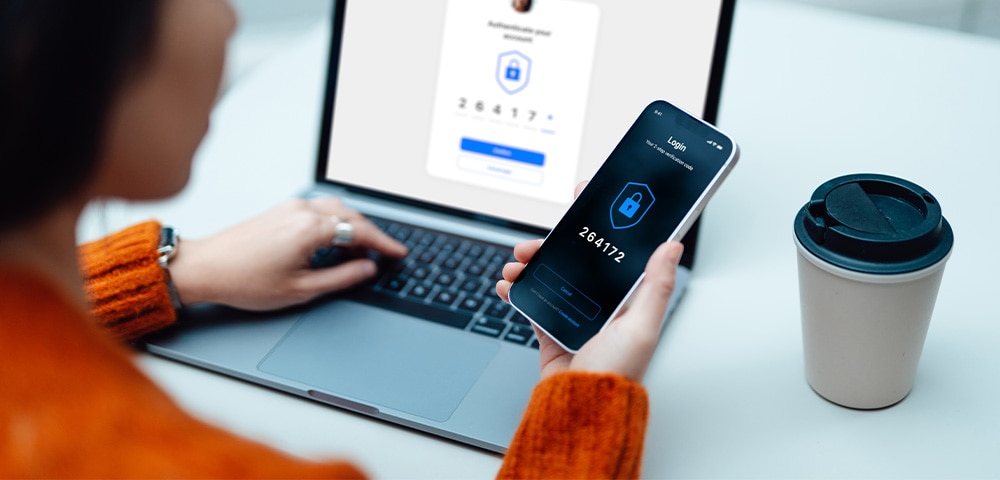Protecting your business from fraud with multi-factor authentication

Cybercrime and digital fraud are pervasive threats to businesses of all sizes. One of the most effective defenses against these threats is multi-factor authentication (MFA).
What is multi-factor authentication?
MFA is an electronic identity verification method that requires users to provide two or more factors to prove their identity before gaining access to an account, network, or system.
These factors typically include:
- Answering a security question, like typing a password.
- Receiving a text or phone call to your mobile device.
- Using your fingerprint or facial recognition (biometric) to confirm your identity.
Benefits of multi-factor authentication
- Enhanced security
MFA has multiple verification steps, so extra authentication is required to access the account, even if a password is stolen or compromised.
- Compliance and customer trust
Implementing MFA helps businesses meet data security and compliance requirements. It also strengthens customer trust by demonstrating a commitment to protecting sensitive data.
- User convenience
Modern MFA solutions, such as biometric verification, provide secure access without adding difficulty to the login process.
Primary MFA Methods
| MFA Method | Security Level | Pros | Cons |
SMS Verification |
Less secure than |
|
|
Authenticator Apps |
More secure |
|
|
Biometric Verification |
Highly secure |
|
|
Hardware Tokens |
Highly secure |
|
|
Tips to maximize your MFA solution
- Stay on top of your policies and settings: Security threats evolve, so periodically review and update your MFA policies and settings to ensure they remain effective.
- Monitor and respond to alerts: Set up alerts for unusual login activity or failed authentication attempts and respond promptly to potential security threats.
- Implement backup and recovery measures: Establish backup options, such as backup codes or alternative authentication methods, to prevent lockouts in the event of lost devices or hardware failures.